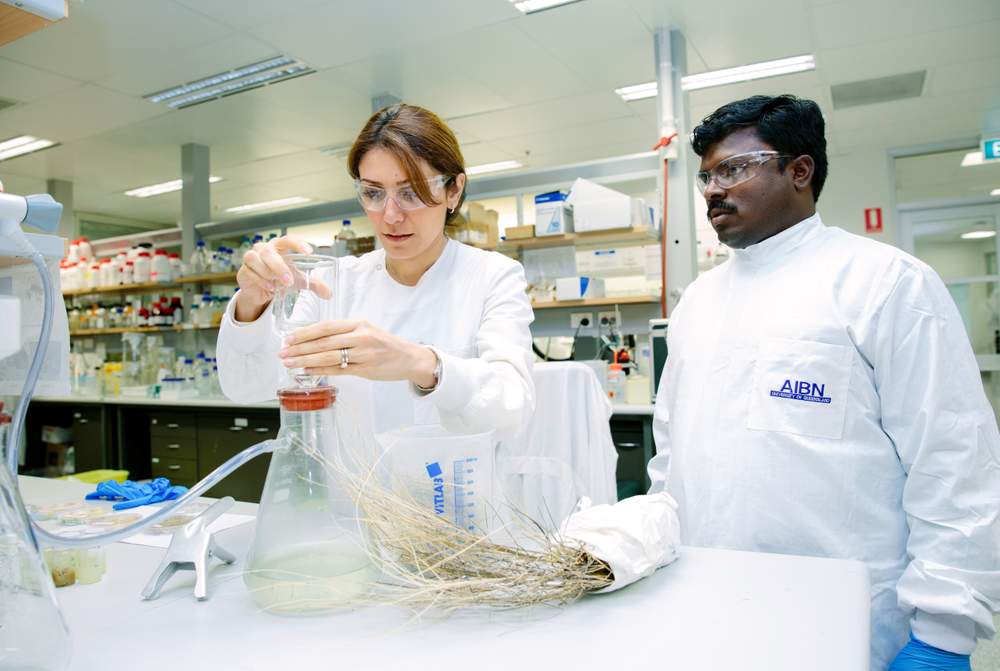Nanofibres can strengthen many materials for a wide range of applications from thinner more flexible electronics and plastics, to next generation building materials and elastomers.
Current nanofibre production is typically both energy and resource intensive, and therefore expensive. Furthermore, most nanofibres are produced from non-renewable sources like petrochemicals. To work towards stronger, more sustainable products we need an energy efficient, renewable and eco-friendly source of nanofibres.
Prof. Darren Martin’s spinifex R&D Team at the University of Queensland (UQ) have developed and patented a low-cost process to extract very long, very thin (3-4 nm) and very tough cellulose nanofibres from spinifex grass. These are among the longest, thinnest and toughest nanocellulose materials reported to date.

Transmission electron microscope image of the spinifex nanocellulose fibres taken at Microscopy Australia’s University of Queensland facility within the AIBN.
Spinifex grasses cover around 30% of the Australian continent, making them a readily available, eco-friendly and drought tolerant source of nanofibres. Spinifex’s plant cell wall structure makes nanofibre refinement easily done without excessive chemicals or energy use.
The research team rely on transmission and scanning electron microscopy at our UQ facilities to understand the structure and mechanical properties of these nanomaterials. Fellow NCRIS facility the Australian National Nanofabrication Facility’s commercialisation arm are also providing funding for further proof-of-concept work to advance the product to a point of maturity where it is investable.
Prof. Darren Martin said “These types of projects typically involve over a decade of work, many researchers, funding sources and partnerships. These partnerships include Microscopy Australia and ANFF who have provided valuable infrastructure and long-term support that have helped make this project possible”.
The UQ team have partnered with the Indjalandji-Dhidhanu People of North-West Queensland, through Bulugudu Ltd, to share traditional knowledge and intellectual property of the process and final product.
They set up a spinifex farm and solar powered harvesting facility at Camooweal, Qld, and a pilot nanofibre production facility at the UQ Long Pocket campus in Brisbane. This initially created 11 Indigenous jobs, a number likely to expand as applications for the nanofibres are fully realised. Large quantities (up to 5 kg/day) of spinifex nanofibres are currently being produced for commercial trials.
The UQ research team is exploring applications in different industries including building materials, paper/cardboard, bitumen, cement, geopolymer materials, packaging and elastomers. They have seen particular success in latex reinforcement, producing nanocomposite latex materials with potential use in gloves and condoms that are up to 30% thinner, while remaining stronger than current products.
“This is such a fantastic project bringing together universities and first nations knowledge. We are proud to have enabled over a decade of progress with our microscopes and expertise and look forward to continuing to do so into the future”, said Lisa Yen, CEO of Microscopy Australia.

Dr Pratheep Annamalai and Dr Nasim Amiralian in the lab with a bundle of spinifex.
Dugalunji Aboriginal Corporation employees harvest spinifex grass, Camooweal, QLD
September 22, 2020